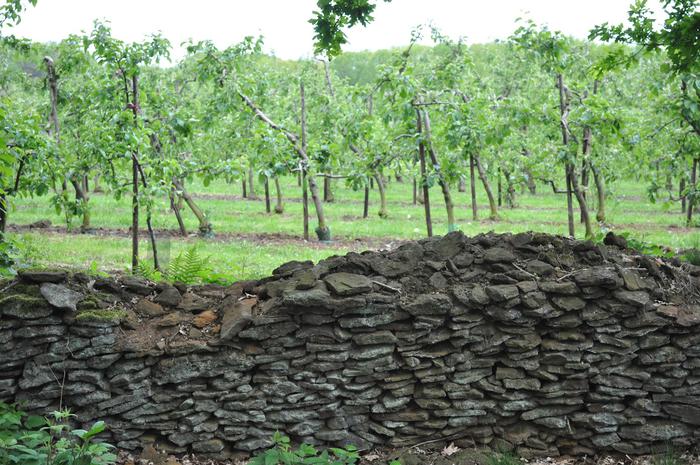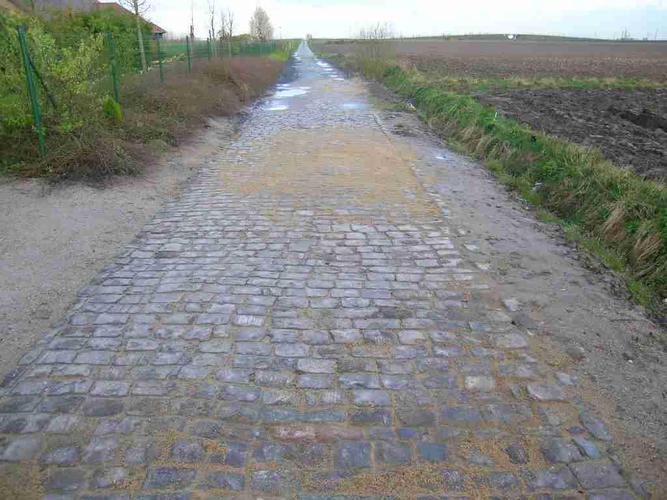Results 1 to 10 of 16
-
10-18-2015, 04:24 PM #1
 Are there ever valuable inclusions found within Natural Stones?
Are there ever valuable inclusions found within Natural Stones?
I know little to nothing about geology or the finer points of locating, harvesting and cutting Stones but wondered, since there is a percentage of garnets in some stones, if there is ever anything more valuable found like how you find gold with quartz? Also always wondered if the finding of the nicer stones were accidental or intentional... ie, Were they looking for something else and found great honing stones along the way or did they initially set out solely for those stones?
-
10-18-2015, 04:45 PM #2

Are you talking about valuable money-wise or valuable to the honing process? Typically not money-wise. The spessartite garnets in coticules are of course very small since they are a razor finishing abrasive. Any large crystals would wreck a razor edge of course. A natural stone that's fine and pure enough to be a top shelf razor finisher is quite valuable by itself, so for any inclusions to be worth more than say a labeled Escher or a Japanese Maruka would likely have to be gold or better!
Most other whetstones are sedimentary in nature or were at some point before they were transformed under heat and pressure and would be unlikely to have large inclusions unless they were an inferior grade.
Can some kinds of inclusions contribute to the honing process? Absolutely. Black specks called goma (sesame seeds) in Japanese stones can boost cutting power, but if they're too hard they can scratch steel. Nashiji (pear skin) is also viewed as favorable. Kan (tree rings) can also either boost cutting power or be toxic (hard). I am not a coticule expert but take it that a higher - but not too high - quartz content is what makes a Les Lat what it is, and desirable.
Cheers, Steve
-
The Following User Says Thank You to Steve56 For This Useful Post:
Prahston (10-19-2015)
-
10-18-2015, 06:48 PM #3

I was wondering more about precious gems or deposits of valuable minerals... Gold, Diamonds, etc.
I watch a lot of Survival Reality Shows and, to hone a basic blade, I've often seen them just grab whatever flat-ish stone is available and work an edge... Seems likely that would be the approach of primitive peoples in general.
Got me to thinking what came first... Looking for something else precious/valuable and coincidentally finding layers of strata/stone that happened to be great for honing. Or, due to some intuition or impulse, someone set out specifically to find these stones.
Just wondering the history of how we got from just using a random rock lying around to actually mining, digging, stabilizing, cutting, etc to find something deep within the ground.
Seems counterintuitve or a big jump so that is why I wondered if discovering these great stones were coincidental in a search for ??? .
-
10-18-2015, 10:39 PM #4

Geologists know the type of rock found in say in location "A" and they know what types of Rocks and Minerals are associated. They know if you are looking for economically important minerals you probably won't find them in Sedimentary Rock for instance. They use rock associations to locate a target area then the go out and drill rock cores and analyze the cores for minerals present. If they find what they are looking for they dig a pit and determine the extent of the deposit. It might be too small to work so they move on. Sometimes the target material is found at the surface which makes things easier. Depending on what they are looking for, these days they have sonar and radar they can use and sensors up in space can help too.
In the old days much was found by accident, just some old prospectors. That's how the big Gold Rushes were started in the 1800s. A mineral like Crystallized Carbon (Diamond) is found in specific Geologic Structures which geologists refer to as "in situ" unless the rock was eroded away and the stones are found transported elsewhere. Much gold is found that way and some precious stones too. Sapphires found in Montana are examples of that.
In the old days Gold Miners panned for gold in streams but they knew somewhere up stream hidden from view was the "mother lode". All they had to do was find it. Many died trying.No matter how many men you kill you can't kill your successor-Emperor Nero
-
The Following User Says Thank You to thebigspendur For This Useful Post:
Prahston (10-19-2015)
-
10-19-2015, 03:24 AM #5

You can hone with a flattish rock picked up from anywhere - IF you know what you are doing. More than likely though, you will end up messing up your edge. Smart people carry a pocket hone with them and have for centuries. In a pinch, without a hone, you would want two flat rocks with fine structure and you would rub them together to get one of them flat, then add water or spit to build a slurry. I don't expect "TV reality stars" to know that though.
As for which came first, accidentally finding a good hone rock or searching for a good hone rock, I think it would depend on how far back into time you went. Even Cro-Magnon man knew which rocks made good arrow heads and which rocks were better for forming the arrow head. My guess is that all hones got their beginnings by someone picking the rock up and realizing that it would be a good hone - but keep in mind that people of the past knew a lot more about hones and blades than people do today.
The history of the Arkansas stone is pretty recent and well documented. Basically I guy noticed a bunch of locals (local to Arkansas) using a certain stone type to sharpen razors and knives. He asked around, found out where the stone came from, and opened a mine to get the stone out and cut it into hone size. The same is probably true for eschers, thurigans, charnleys, etc. IMHO.Some people never go crazy. What truly horrible lives they must lead - Charles Bukowski
-
The Following User Says Thank You to criswilson10 For This Useful Post:
Prahston (10-19-2015)
-
10-19-2015, 05:44 PM #6

On "Dual Survival" one gent did exactly that and loosely explained the process and that is what got me thinking about how all this came about and at what point modern man went from just picking stuff up to really working in a completely different manner.
I never really thought that some of these areas may have been exposed, as in the case of the Arkansas Stone, where people could go to the side of a hill/cliff/riverbed and get what they need... Then, someone comes along and takes it to the next level. I was presuming these stones were and have always been deep and unseen from the surface and therefore couldn't figure out how you get from A to B in that scenario.
Thanks for all the info!! Really fascinating how things come about... Like the story of the granddaughter who was instructed by her mother to always cut a roast in half before cooking then the granddaughter asks the grandmother why and learns it was just because Grandma had only had a small pan and that cutting the roast was not a necessary part of the process... Made me wonder if there were a weird-histroy like that surrounding natural honing stones.
-
10-19-2015, 06:49 PM #7

Maybe not exactly what you're asking, but quarries such as the one in Ardennes (Belgium) do hones as a sideline to their main function of quarrying stone for construction and such. At least that is what I've been led to understand.
I'm not sure, but I wouldn't be surprised if most of the old Thuringan, Belgian, and maybe even British and USA quarries from the past couple of centuries worked along the same lines. The harvesting and sale of hones being an adjunct to their other quarried products.Be careful how you treat people on your way up, you may meet them again on your way back down.
-
The Following User Says Thank You to JimmyHAD For This Useful Post:
Prahston (10-19-2015)
-
10-19-2015, 07:03 PM #8

That is essentially exactly what I was wondering... Makes more sense that a quarry is established for something like Construction and then they have an interest in maximizing all present materials so start looking around and they discover a layer that just happens to be awesome for honing.
Really interesting stuff!!
-
10-19-2015, 07:38 PM #9

Here are a few examples gotten from the web, a stone house said to be made with Belgian blue stone, a fence and a paved road ;



I think it was Bruno, years ago posted some pix of other examples of Belgian blue in industrial type applications, but I couldn't find any pix.Be careful how you treat people on your way up, you may meet them again on your way back down.
-
The Following User Says Thank You to JimmyHAD For This Useful Post:
Prahston (10-19-2015)
-
10-19-2015, 07:56 PM #10

Getting off topic but I learned about a famous mining town called Jachymov this summer in a documentary about uranium....The radium Marie Curie used was obtained from ore dug during silver mining in today's Czech Republic around Jachymov. The word dollar is derived from thaler which came from Joachimsthaller, the name of the silver coins minted in Jachymov.
-
The Following User Says Thank You to Leatherstockiings For This Useful Post:
Prahston (10-19-2015)


 21Likes
21Likes LinkBack URL
LinkBack URL About LinkBacks
About LinkBacks






 Reply With Quote
Reply With Quote



